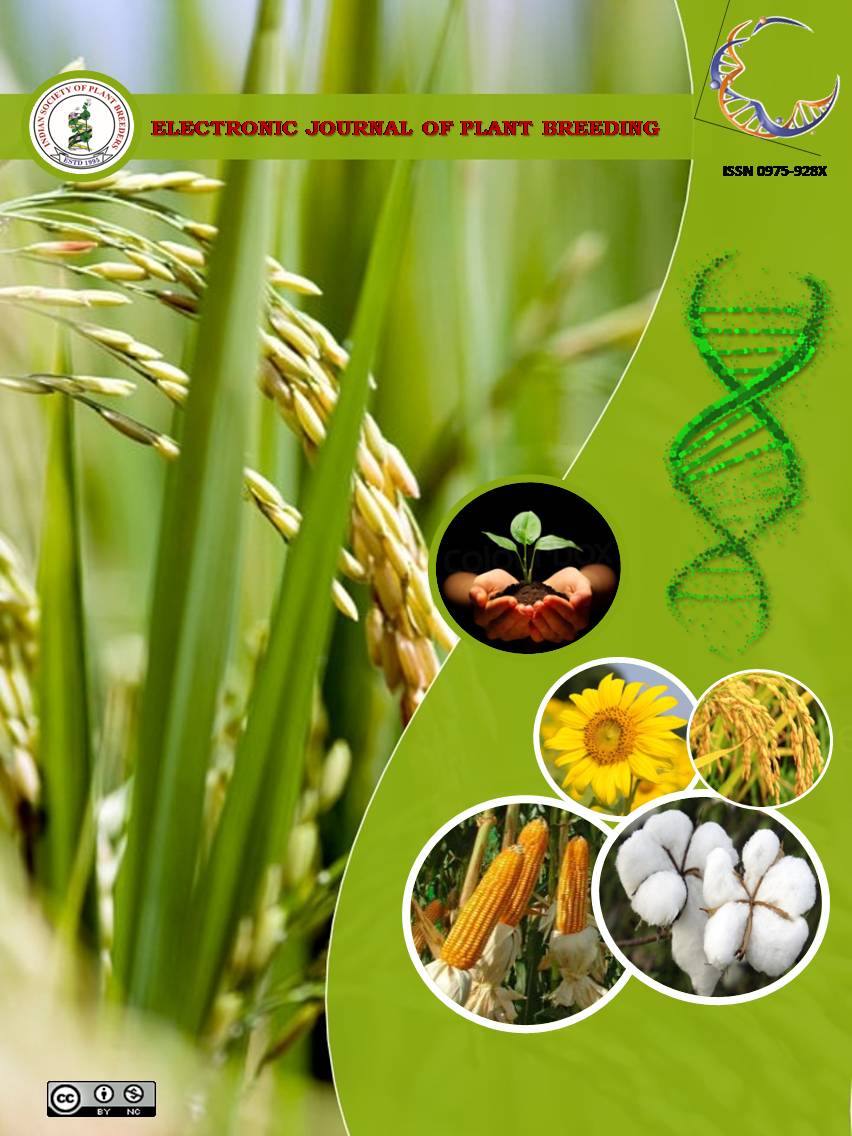Heterosis, combining ability and gene action studies for insect-pest and disease resistance in cucumber
Abstract
The paucity of research pertaining to the heterosis, combining ability, nature of gene action and proportional contribution of lines, testers and their interactions for insect-pest and disease resistance in cucumber motivated us to undertake this study. The experimental material comprised 48 F1 hybrids, developed by crossing 16 lines (eight gynoecious) with three testers during the year 2011. Parents (16 lines and three testers) and their F1 48 hybrids, along with two standard checks (“KH-1” and “Pusa Sanyog”), were planted in a Randomized Complete Block Design (RCBD) during the year 2012 for screening against different insect-pest and diseases under natural field conditions. In the present studies, genotypes LC-1-1, LC-2-2, LC-15-5, CGN-20969, CGN-20953, Poinsette and K-75 and crosses LC-1-1 × K-75, LC-15-5 × K-75, LC-3-3 × K-75, CGN-20969 × Japanese Long Green, and CGN-20953 × K-75 were found superior in response to insect-pest and disease incidence. Gene action studies indicated predominant role of non-additive gene action governing all the traits except fruit fly incidence, thereby, indicating usefulness of heterosis for disease resistance breeding in cucumber. Further, proportional contribution of lines was recorded highest for severity of powdery mildew and angular leaf spot, whereas testers were found superlative for fruit fly incidence and severity of downy mildew. Therefore, selection of parents should be done depending upon the trait of interest for resistant hybrid development in cucumber.

It is certified that:
- The corresponding author is fully responsible for any disputes arising due to the publication of his/her manuscript.
- The article has been seen by all the authors who are satisfied with its form and content.
- The sequence of names of authors in the by-line is as per their relative contribution to this experiment, giving due credit to all scientists who made notable contribution to it.
- All the authors fully understand that inclusion of any other co-authors or exclusion of any co-authors is not possible once the article has been submitted to the journal.
- The corresponding author takes full responsibility for this article.
- The address of the organization where the research was conducted is given.
- The article is exclusive for this journal, and the results reported here have not been sent (and will not be sent during its consideration by this journal) for publication in any other journal.
- Authors agree to abide by the objective comments of referees and do agree to modify the article into a short note as per the recommendation, for publication in the Electronic Journal of Plant Breeding.
- If published in Electronic Journal of Plant Breeding, the copyright of this article would vest with the Indian Society of Plant Breeders, who will have the right to enter into any agreement with any organization in India or abroad engaged in reprography, photocopying, storage and dissemination of information contained in it, and neither we nor our legal heirs will have any claims on royalty.


